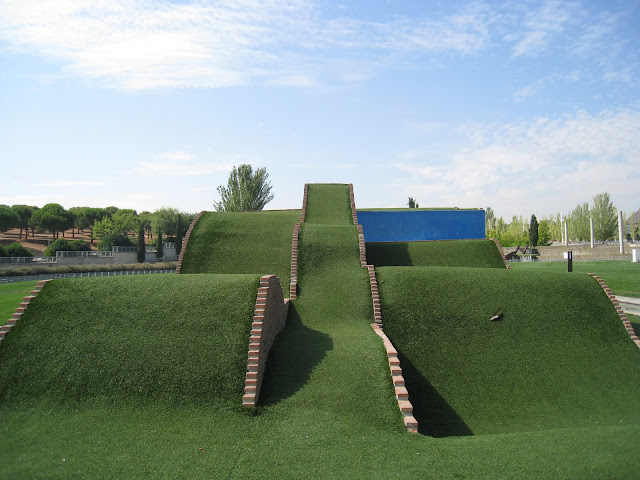Adjacent to the PAU, Toyo Ito designed La Gavia Park that was meant to treat the water from the new development. Unfortunately the park was not completed and stands fenced and non-functional. But there was a hole cut in the fence and people seem to use it as an unofficial entrance which we used to bring the CEU San Pablo Landscape Masters class in for a tour.
I do not have the complete story but from what I can gather there were issues with the Madrid water authority not approving the treatment of the water on site which seems ridiculous because that was the whole premise of the much publicized sustainable park. But it would not totally surprise me that there was a lack of coordination here between city agencies...
The park was built on an existing 39 ha landfill so the dramatic topography in the flat plane is welcome. You can see above that it is irrigated and one of the few green spaces in the area since irrigation is very limited due to the dry climate.
Here is a model of the system of "water trees" that would filter the water as is fed by gravity through successive cells until it reaches the restored La Gavia stream.

This is a view that we did not get to witness, of the "water trees" partially full of water.
From the top of the hill where the museum and tower were meant to be is a large unfinished concrete structure that was to be the primary treatment. Since this is incomplete the system cannot function. But the view from the top was still stunning. You can see the new colorful architecture of Vallecas in the distance.
When you turn around you can see other landforms in the distance which are very sculptural and set off the remaining agricultural fields. Although I like the idea of the park and its forms, I wonder if they would have looked at the existing system of landfills as a recreational corridor and made smaller more localized water treatment throughout the urbanization, it could have been a more efficient and long term use of the 2.5 million euro budget?






















































